Misleading hyper-partisan information animating U.S. militia supporters ahead of election day
Claims that Trump supporters received threatening
Misleading hyper-partisan information animating U.S. militia supporters ahead of election day
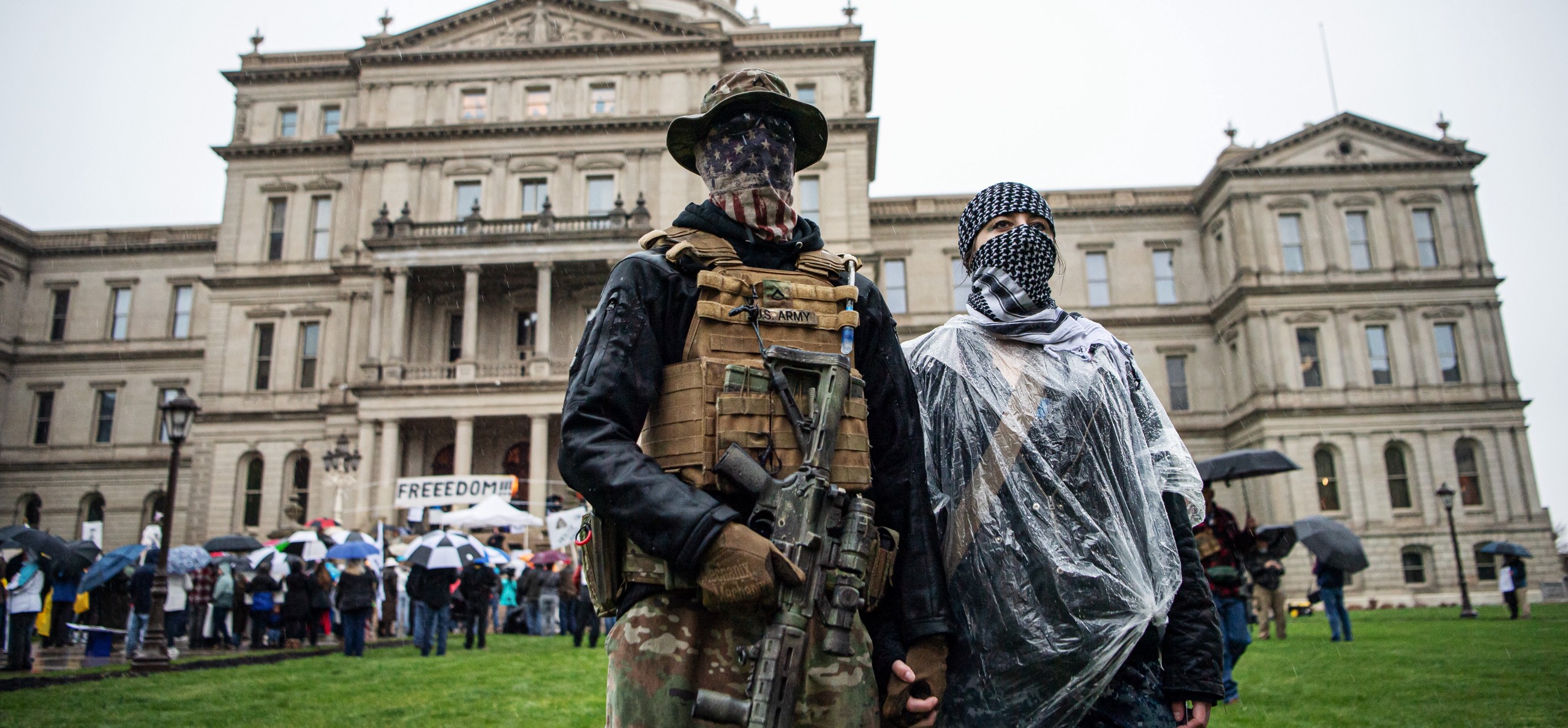
Claims that Trump supporters received threatening letter potentially exaggerated by hyper-partisan media diet
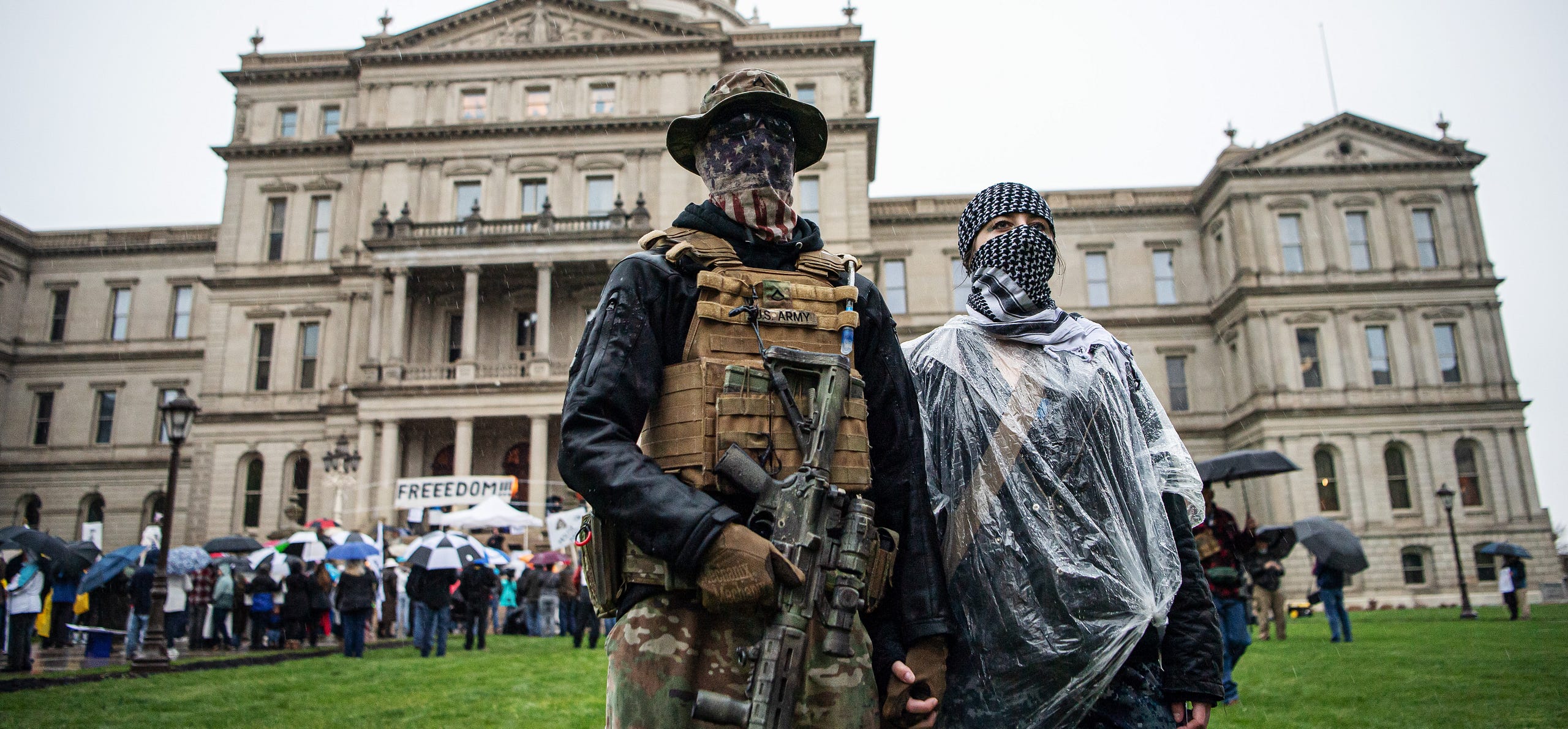
Inflammatory partisan misinformation on social media ahead of the U.S. 2020 presidential election is irritating online communities populated with right-wing extremists supportive of the domestic militia movement.
Misinformation has long animated extremist movements in the U.S. and bunk information surging online in the run-up to this year’s election brings with it the risk of further inflaming members of such movements to real-life action, as it has before. Militia movement leaders have signaled they may engage in actions on election day and a period of time afterwards, raising national concerns about intimidation and violence targeting a basic function of democracy. Some states have preemptively enacted measures meant to defend voting locations from such threats.
The DFRLab assessed one such case of misleading election-related information, in the form of a potentially legitimate threatening letter that was amplified in such a way that may have exaggerated how widespread it was.
On October 19, 2020, American Conservative Union chairman and longtime lobbyist Matt Schlapp shared an image of a flier on Twitter he claimed was left “in Kansas City neighborhoods.” The flyer Schlapp uploaded stated a “fair warning” to Trump supporters that their address had been added to a “database as a target for when we attack should Trump not concede the election.”
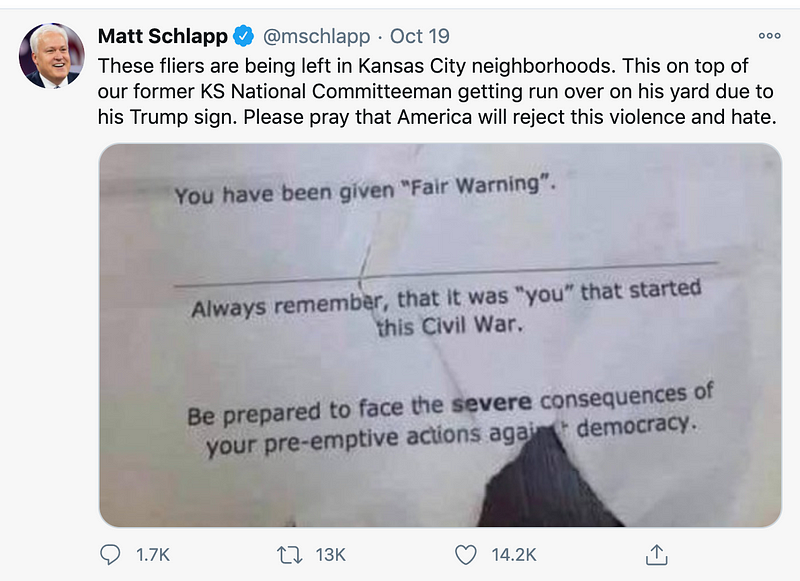
The next day, Kansas City Police disputed claims about the letter, posting on Twitter that it had “received NO reports of any Kansas City, Mo., resident receiving this note.” The police department cautioned residents to “always research the origins of things you see online that could spread fear and division before sharing them.”
We have seen this circulating on social media. We have received NO reports of any Kansas City, Mo., resident receiving this note. As with anything, we urge you to always research the origins of things you see online that could spread fear and division before sharing them. pic.twitter.com/23YFnIqW6t
— kcpolice (@kcpolice) October 20, 2020
Images of the letter first appeared on an Instagram account that has shared QAnon conspiracy theory content, and a pro-QAnon account on Twitter, determined via Facebook’s CrowdTangle analysis tool and reverse-image search, respectively. A cropped screenshot of the Twitter account’s post served as the basis for some of the earliest photos of the letter posted in Facebook groups and pages detected by CrowdTangle. The images of the letter were posted to the accounts more than 24 hours before Schlapp shared a photo of the flyer on his Twitter account.
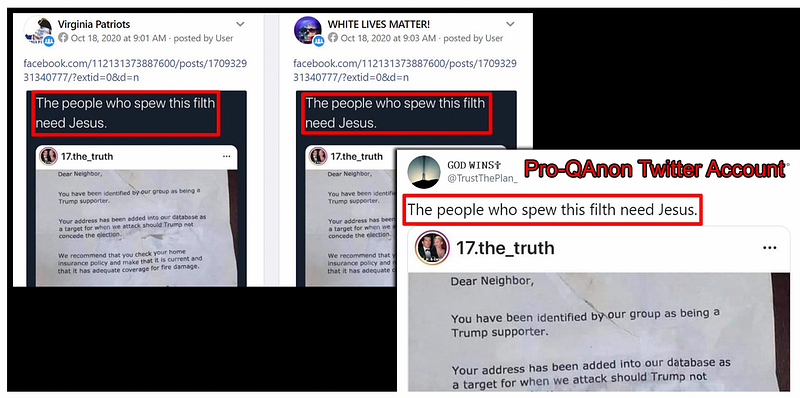
Reports of individuals claiming to have received similar or identical letters spread across the United States in the following days and were in turn boosted by hyper-partisan conservative news sites. A handful of people may have received letters matching the image shared by Schlapp, although not in Kansas City as he described. The New Hampshire Union Leader reports that police are investigating instances where individuals reported receiving threatening letters with the same text, though most of the images re-posted by individuals across social media were of a single copy of the alleged letter.
CrowdTangle analysis detected that 167 Facebook pages and 360 Facebook groups had posted images of letters containing the same text, as of the time of publication. As debunking site Truth or Fiction noted, nearly all posts claiming to have received one of the fliers showed images of a flier with strikingly identical perforations in the paper, suggesting that many of the early images circulating were of a single copy. The DFRLab observed the same similarities between allegedly received letters during its own review.
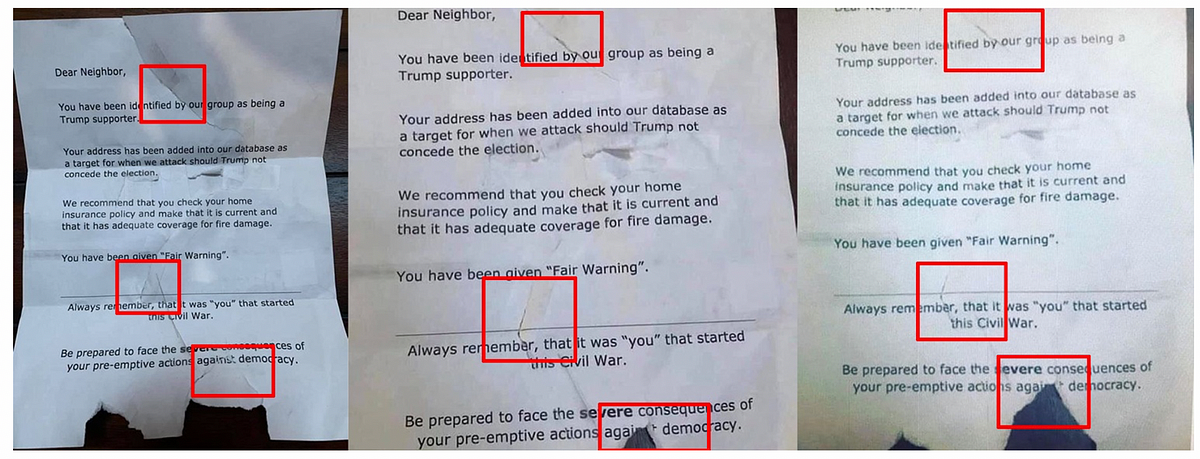
Images of the letter were shared between users of private chat groups containing right-wing extremists, on forum boards popular with militia movement supporters, and on social media hubs populated with extremists and their sympathizers in the United States. Discussions on these forums have been punctuated with speculation about what violent action various left-leaning political causes in the United States might take against Trump supporters in the wake of the 2020 election, and that speculation has been used to encourage recruitment efforts.
Militia movement communities online are particularly susceptible to misinformation due to their hyper-partisan media diet. The DFRLab reviewed links to articles shared by users in the breaking news section of MyMilitia, a forum board used by potential and current militia movement members; among Oath Keepers members in a national chatroom; and on a forum board space for new and unvetted members of the national Three Percenters movement, during a two-week span dating Oct. 14–28, 2020. Using the Media Bias Chart by Ad Fontes Media, the DFRLab attributed the linked articles that appeared on the forum using Ad Fontes Media’s categorizations for potential partisanship, including Most extreme left, Hyper-partisan left, Skews left, Neutral, Skews right, Hyper-partisan right, and Most extreme right.
The DFRLab sorted articles from outlets not listed in Ad Fontes Media’s rankings as “hyper-partisan right” and “most extreme right” if their contents clearly echoed that of other articles ranked in those categories. Articles shared from news sources with unclear political leanings, including local news outlets, were left unranked. None of the news sources left unranked clearly leaned hyper-partisan left or most extreme left. The DFRLab did not count shared links to video content.
Articles shared by users in the three digital communities analyzed were sourced from overwhelmingly hyper-partisan right-wing and extreme right-wing outlets. During the time period analyzed, only two articles posted across the three communities were from sources ranked neutral by Ad Fontes Media, and only one article was from a source that ranked as skewed left.
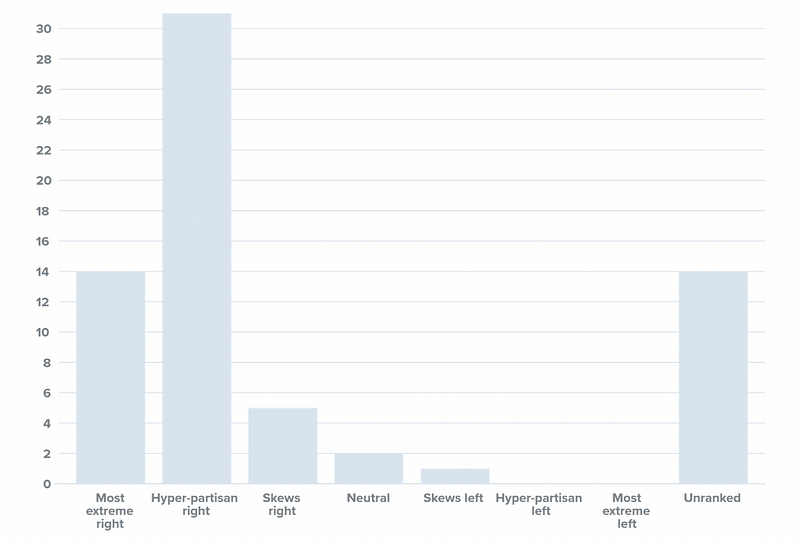
Jared Holt is Visiting Research Fellow with the Digital Forensic Research Lab.
Follow along for more in-depth analysis from our #DigitalSherlocks.

